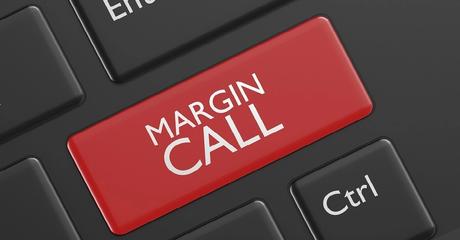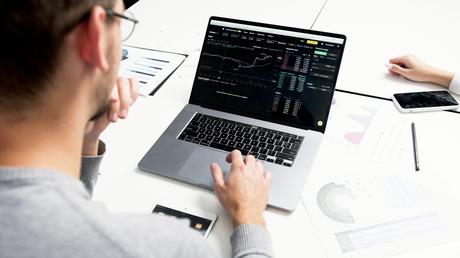
The concept of margin is a very important one every trader (albeit an options trader or futures trader) has to deal with. It’s even such crucial you need to understand this topic that you should know that even some well-known professional traders got victims of their own rashness because they got trouble with the margin. As a result, they went bankrupt. In this article, I’ll give a rough overview about the concept of the margin. So read on, folks.
What is a margin and how does it work?
So what is meant by margin in trading? To explain this, we should start with an explanation of the types of trading accounts.
Imagine, you would like to open a trading account. In this case, you usually can decide between two types of accounts – a cash account and a margin account. With a cash account, you can trade as much as you paid in your trading account. With a margin account on the other side, you can trade much more than your account sizes allows it. And this is actually the common type of trading accounts – a margin account.
The advantage of a margin account is that, as mentioned, you can open much more trades than your real account balance would allow it. The disadvantage of a margin account is that this type of account invites to exaggerate and here is the crux of the matter.
A lot of trading beginners and even professionals are disregarding this fact and open too many trades. This works fine as long as things are working well. But as soon as things are start to go wrong, you would get a lot of problems which all begin with a “scary” term “margin call”.
Nobody wants to get a margin call. If you get one, you will know that you screwed it up! And nowadays, a margin call is even worse than 20 years ago. More about margin calls you will find in one of the next sections below. But now, let’s continue with the question what is margin and what is margin good for.
So finally, what is margin and how do margin work? A margin is a kind of a security deposit. When you open a trade, a part of the money you have in your account gets automatically frozen up as long as you’re in the trade. When you close the trade, the money will be unfrozen immediately. Actually, that’s the whole concept of what margin is and how it works. As you can see, it’s a pretty simple concept to understand.
What is margin good for?
Actually, a margin is good for both sides – for you and for your broker. It’s good for your broker because your broker is accountable for your losses. Why? Because a broker has to ensure that the counterpart of your trade gets the money once things go wrong. If you will not be able to pay your dues, your broker will do it for you. And here’s the catch. Your broker doesn’t want to pay your dues which is understandable because he wants to make money and not to loose it. Therefore, to cover himself against potential losses, your broker freezes up a part of your money. This is the money he would take in case you wouldn’t be able to discharge your payment obligations.
But this is just the beginning of the story. The money you got frozen up is not all the money you would “lose”, but you need to pay more. Your broker, once things would go wrong, would try to get as much of your money as possible. How he would do this, you will learn in the section about the margin call, folks.
When you read these lines, it would seem that your broker is the only one who profits from the margin concept. But the truth is, that you are profiting from this as well, even if it doesn’t seem this way. The reason it’s good for you is that with a margin call the broker would prevent you from a total failure of your account, of its total collapse if you will.
What is a margin call?

When you open a trade, your broker will freeze up a certain amount of your money which is called initial margin. That’s the money your broker secures to get at least a bit of a safety. But in case things start to go wrong, your broker starts to freeze up more and more of your available money. All of this to make sure you’ll be able to cover your losses. But once it gets clear the size of your money account wouldn’t be sufficient, you would get a so-called margin call. But what is a margin call?
Well, before the era of electronic trading when people traded on the floor, you would indeed get a call from your broker. And he or she would say something like “You are reaching the maximum of your allowed margin. Please send over more money or reduce your positions.” If you wouldn’t do this, you would get another call the next day, and if you would have known him or her well, maybe one more call on the third day. But those days are gone and what remained is the just name – margin call.
Nowadays, you wouldn’t get a call at all because we live in a trading environment of algorithms scanning the accounts of traders in real time. As soon as you cross your allowed margin level even one cent, the algorithm starts to close your positions no matter if your positions are in the loss or in the win zone! That’s why it’s important you do a good money management to avoid a margin call.
How is margin calculated, and how much margin is safe?

The margin is calculated on the basis of the risk the exchange is presuming when you open the trade. The risk itself is the worst case an exchange is calculating. But what is the worst case? Well, in case you have read my article about implied volatility, you have learned the concept of standard deviations. If not, I recommend you either to read this article or check other sources about standard deviations so you can follow my explanations, folks.
But anyway, the exchange is calculating the margin on the risk basis of two standard deviations. With two standard deviations, the exchange makes sure that when you open a trade, and afterwards the stock (or a futures contract) makes a very strong move, the exchange will get the money which results in a loss from this strong move.
The next day, the margin will be reevaluated by your broker. The broker will take a look at the move of the stock or other security you opened an options trade on, and then he will recalculate the two standard deviations. After this your margin will be adopted to the move of the security. Of course, there exist a lot of different strategies in the markets how to reduce the margin and even how to keep it unchanged. The classic ones are for example the bull-put spread or a cash secured put.
This was a pretty simplified explanation of about how margin is calculated but I hope, this simple explanation will give you a rough understanding about the calculation of the margin.
But how high should your margin be and how much margin is safe? Well, there are a lot of different recommendations and opinions. But if you ask me, they are all subjective. Some traders recommend using a maximum of 20% to 30% of your account size. My (subjective) recommendation and it’s also a recommendation of other professional traders I know, is to have a total margin of maximum 50%. After a crash, when you see that the markets start to recover, then (and only then) you can temporarily deviate from this rule and increase the margin to 70% to profit from the fast market recovery. By the way, if you would like to know how to profit from crashes in the stock market, then you should check my course on Udemy, folks.
As you can see, every trader is acting differently which is absolutely legitimate. The reason for this is that every trader has it’s own trading strategy and a certain account size. Therefore, it’s actually not possible to give an objective answer how much margin is safe.
But whatever you do, just ensure that you have enough money to avoid a margin call. Always check your available money (which is not frozen up) and check your positions before you add some new ones. Always ask yourself: how much would you risk when you push up the margin, and can you afford it to do this?
In other words, it’s all up to you how you deal with this topic. As long as you have a good money management, you can deal with the margin as you want.
Is margin trading a good idea?
If you ask yourself “Is margin trading a good idea”, I can say: yes, it is, as long as you follow the rule not to exaggerate, and as long as you have a good money management. If you deviate from the rule and disregard the margin, you will risk losing a bigger part of your money or even your whole account. In this case, margin trading would be a very bad idea. And to show you that even professionals do these mistakes, I’d like to give you one example when a professional went bankrupt because this person didn’t care about the margin.
Karen “Supertrader” Bruton
There is a lot of information about Karen Bruton on the internet and YouTube available. But a lot of this information I cannot verify if this information is fake news or not. Therefore, I cannot give you a detailed information about Karen Bruton without risking to provide false information.
Therefore, long story short from some reliable sources:
Karen Bruton’s trading activity began somewhere at the beginning of the 2000s. Allegedly, she had $100.000 and would borrow money from her family. In total, she would have about $600.000 at the beginning, and she would develop a strategy how to trade options on indices in the stock markets, like options on index ETFs like the ETF on S&P500 (SPY), on Russel 2000 (IWM), and so on.
The incredible result was that she would take these $600.000 and make $40 Million in just three years, which means an annually result of around 305%. Because of this success, she set up a fund and gathered more money, for example from institutional investors.
As a strategy, she specialized in trading strangles on these products. If you never heard about a strangle: a strangle means that you sell a naked put and a naked call at the same time. The idea behind this strategy is to speculate that the underlying (stock, futures contract, or whatever) will move sideways. In case the underlying starts to move in a certain direction and cause losses, you would need to adjust your positions by closing the loss positions and opening new positions with a longer expiration than the previous position to recover the losses. The term for this method is called “rolling positions”.
According to the available information, she wouldn’t roll the positions into a longer period of expiration. Instead, she would select a lower strike with the same expiration. But to collect a premium to recover the losses and to generate again a profit, she would need to increase the number of positions.
But the problem here, as you might already recognize, was what? Correct, bigger positions mean a bigger margin. And by using this method she must have had her account operating under full load and thus, the most time at margin limit.
Doing this, it would be just a matter of time when an account operating at margin limits would get a margin call. And in one of the interviews I’ve seen, she admitted that she had to realize a loss of $50 Millions on just one freaking day!
But it seems that she tried to conceal this huge loss of $50 Millions, and also did some actions to generate incentive fees although she didn’t make profits at all. These actions lead to a fraud investigation of the SEC. But to explain it all in detail would go far beyond the scope of this article and it’s actually not the core topic of it. If you would like to read the SEC allegation, you can download it here. What is important to learn from this case is to have a very good money and risk management. Just in case your are looking for a good book about risk in trading, I can recommend the book called “Trading Risk by Kenneth L. Grant”**
Okay folks, this was one example to show you what happens when you operate your account at margin limit. There are, of course, more examples with professionals. If you would like to read more about it, just google for Victor Niederhoffer. It’s a hedge fund manager (actually a brilliant one) who exaggerated it twice.
As you can see, to have a good risk management and deal with margin properly is crucial to survive in trading!
Advertisement*
**Affiliate link: when you click on this link, no additional costs would arise for you and the product or the service will not become more expensive. When you decide to buy the product or use the service, I’ll get a little benefit from the provider which I would reinvest to keep this blog alive.
